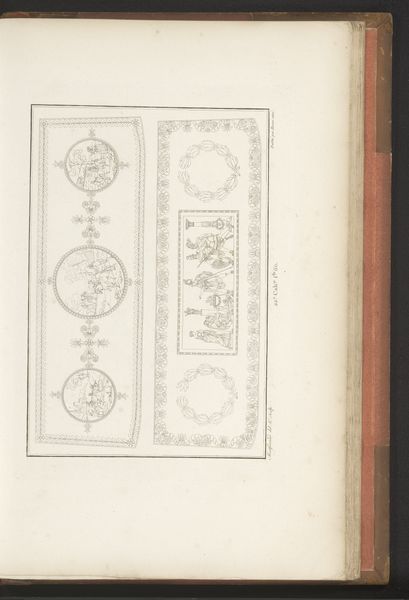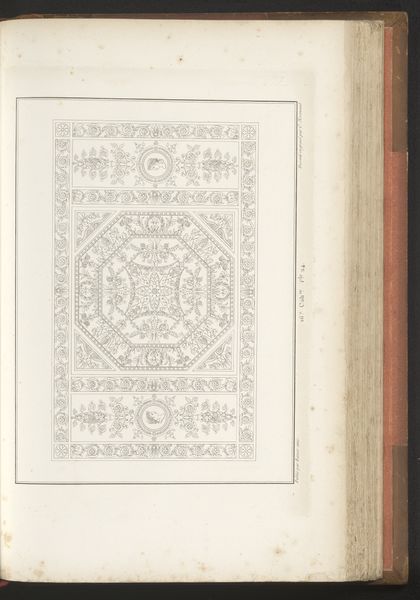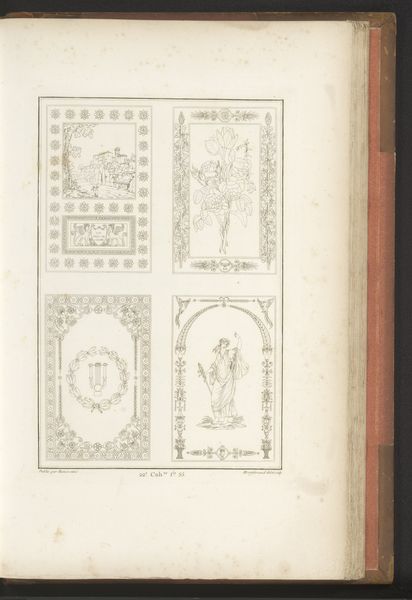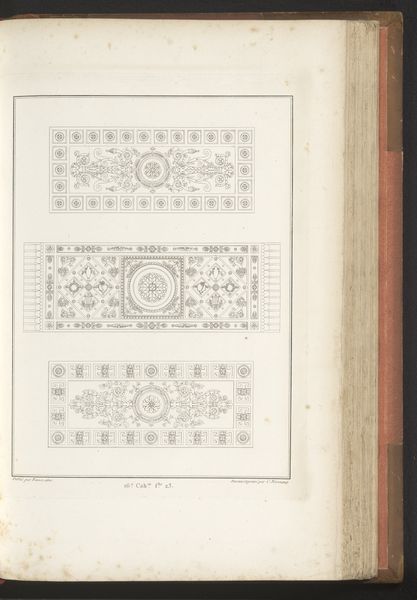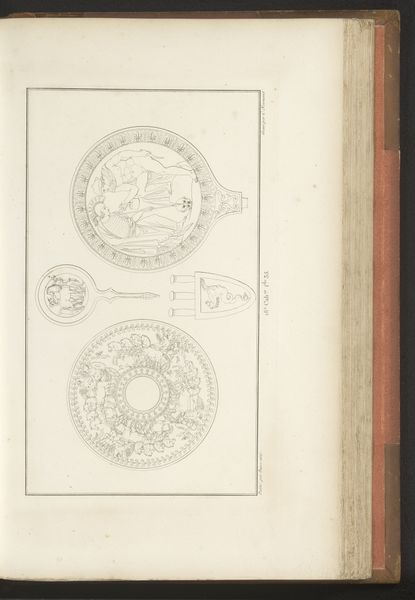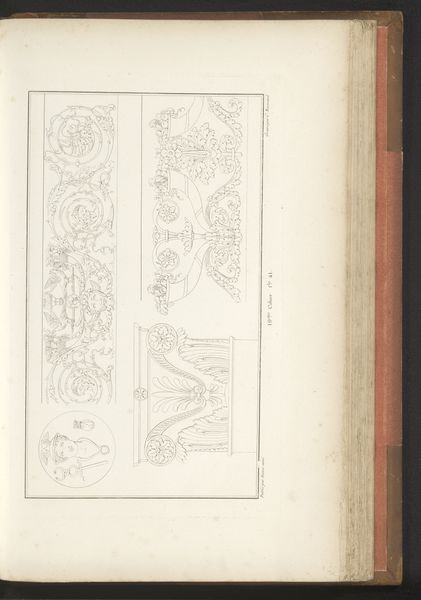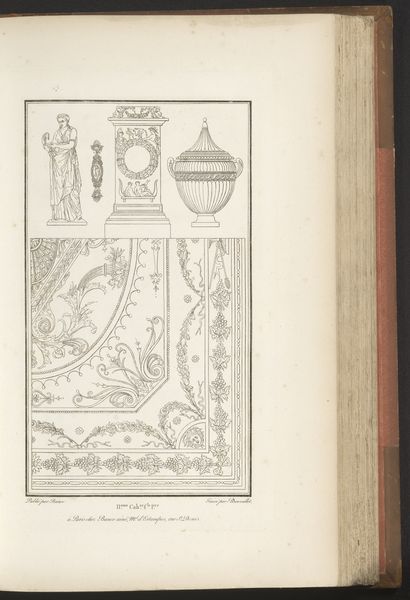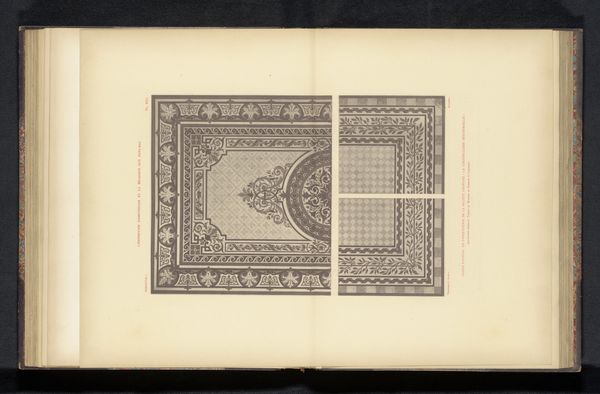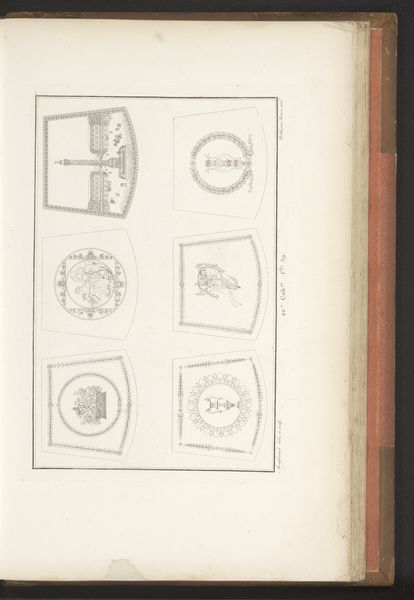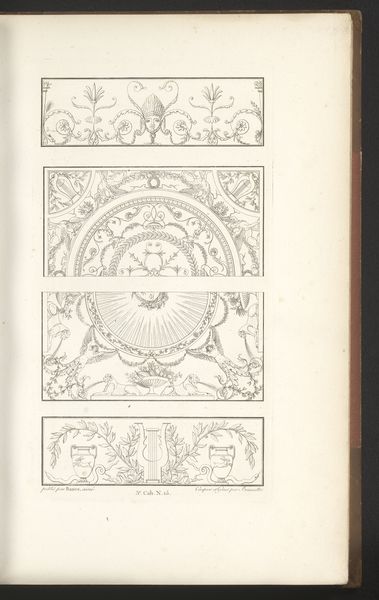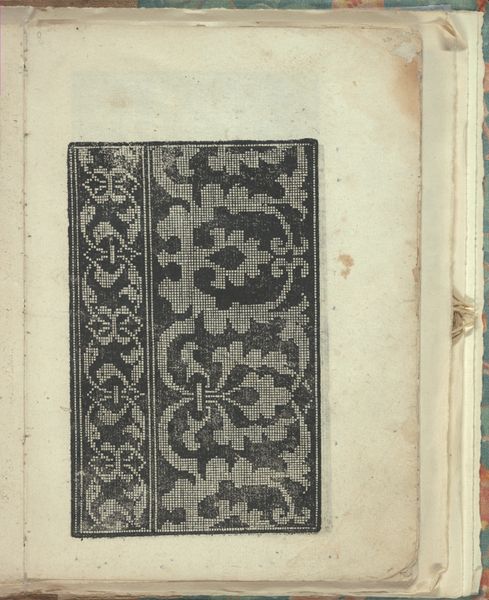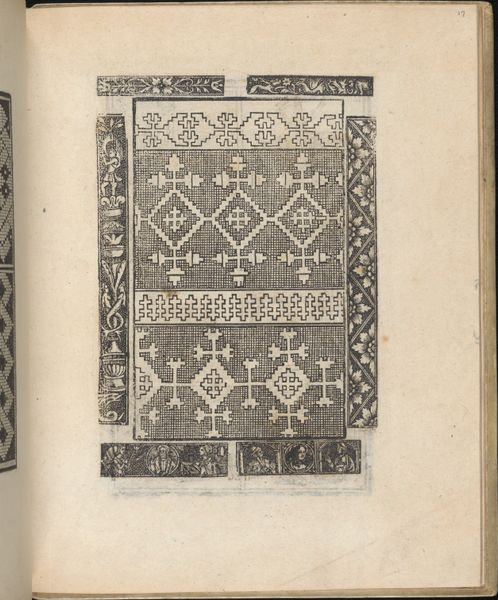
drawing, paper, ink
#
drawing
#
neoclacissism
#
paper
#
ink
#
geometric
#
decorative-art
Dimensions: height mm, width mm
Copyright: Rijks Museum: Open Domain
Curator: This drawing from around 1820 by August Ricard de Montferrand is titled "Vloerkleed," which translates to "carpet" in English. It’s ink on paper, showcasing an elaborate floor covering design. Editor: Intricate! It evokes a sense of old-world luxury and aristocratic power, almost dizzying with its geometric complexity. The repetition in the design speaks to a carefully ordered world, one quite distant from our own chaotic reality. Curator: Certainly. It’s an example of decorative art that very much reflects the prevailing Neoclassical aesthetic, revived under Napoleon, a kind of controlled grandeur. Notice the central medallion within the carpet, likely intended to display a family crest or another emblem of authority. How would such a visual affect those moving around a palace or manor house, where it was installed? Editor: It reinforces established hierarchies by literally imprinting dominance into the very floor people walk on. Consider the lack of artistic agency granted to the lower social classes. They could perhaps make or install the thing but definitely couldn’t afford such things themselves. Did these elaborate designs ever encourage cultural appropriation or imitation in less privileged communities, an early instance of artistic 'trickle down'? Curator: Interesting point. Historians argue Neoclassicism in interiors was often employed to evoke a sense of moral order and Roman virtue, subtly justifying the elite's social position through parallels with empires. By controlling the design, production, and use, the political significance is enhanced. How radical a choice would it be if such designs became part of ordinary households, undermining assumptions of power linked to decor? Editor: Precisely! By allowing certain visuals into specific demographics, society permits or even stifles dialogues and expressions, consciously or not shaping norms of who deserves access to cultural richness. The 'democratization' of aesthetics is, therefore, intrinsically linked to societal justice. A carpet isn't just something soft on your feet, it's a statement. Curator: I agree. Its physical presence in space held meaning—who commissioned, crafted, maintained, and ultimately walked upon it—reveals complex socio-economic stories that are relevant today as we examine how structures of design both represent and perpetuate social inequalities. Editor: A stark reminder that art always operates in relationship to people—to oppress or uplift. Food for thought!
Comments
No comments
Be the first to comment and join the conversation on the ultimate creative platform.
